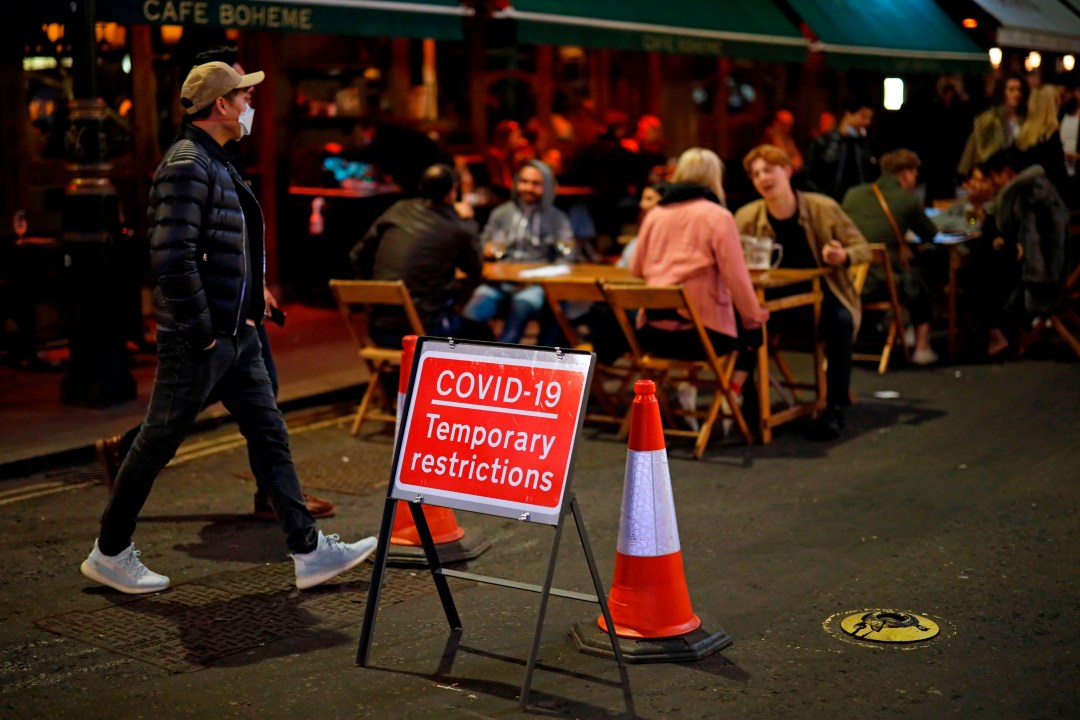So, the numbers of new Covid infections in the UK failed to register a fourth consecutive fall and instead rose to a new record of 7,143. This does not mean that the disease is spreading as rapidly as it did in the spring when far fewer tests were being undertaken, but the rise has nevertheless led morning news bulletins. Week on week, daily new infections have risen by 45.3 per cent: 42,608 in the week ending 29 September compared with 29,323 a week earlier. This is consistent with a doubling every 10 days or so.
There are a few observations that have been less-well reported. Firstly, Monday’s sharp rise was exaggerated by an especially sharp rise in Scotland, where newly recorded cases nearly quadrupled from 222 on Monday to 806 on Tuesday. This is likely to be down to mass testing in student accommodation in Glasgow and elsewhere. But it does rather undermine Nicola Sturgeon’s claim to have handled Covid-19 much better than the government at Westminster. There was a time, through much of the summer, when the statistics of recorded new infections might have supported such a claim, but not now — the 3,595 new infections in Scotland over the past seven days works out at a marginally higher rate per 100,000 than England’s tally of 34,844 new infections.
Another observation is how local lockdowns appear to have failed to stall the rise in infections in areas where they were imposed. In Leicester, for example, which in early July was the first area to be placed in localised restrictions, the cumulative number on infections grew by 86 per cent between 1 July and 28 September. The number of cumulative infections in the East Midlands as a whole, by contrast, increased by 55 per cent. Of course, that increase may have been even higher without additional restrictions.
Bolton and Oldham, along with other Greater Manchester boroughs, were placed into localised restrictions in late July and now have among the most stringent measures anywhere in the country. The cumulative number of cases in Bolton has since risen by 141 per cent and in Oldham by 109 per cent. Cumulative cases in the North West as a whole have increased by 83 per cent over the same period.
It is easy to look at the data and argue that local lockdowns don’t work (although, of course, we will never know what would have happened in these areas without the extra restrictions), and use that to make the case for dismantling localised restrictions.
On the other hand, no-one should be too surprised if the government uses the failure of local lockdowns to make the opposite case: that the rules are so complex and confusing (to even the Prime Minister) and that therefore the whole country should be placed into a second lockdown in order to make the rules easier for everyone.








Comments